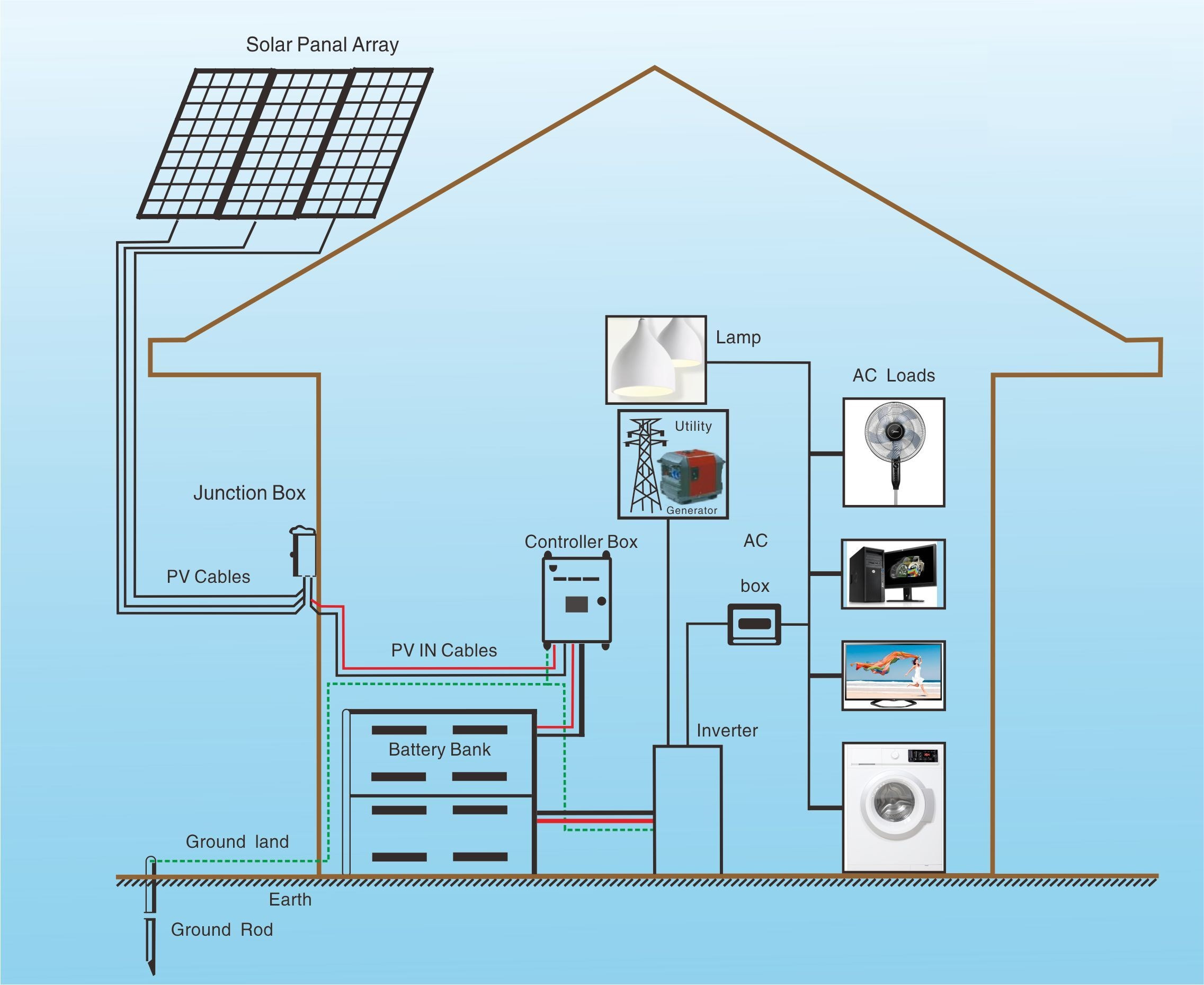“What is the proper wiring layout for house solar panels?”
Understanding the Basics of Solar Panel Wiring
Before we dive into the wiring layout, it’s essential to understand the basic components of a solar panel system. A typical solar panel system consists of:
- Solar Panels: These are the photovoltaic (PV) panels that convert sunlight into electrical energy.
- Mounting System: This includes the frames, clamps, and trackers that secure the solar panels to the roof or ground.
- Inverters: These devices convert the DC power generated by the solar panels into AC power, which is usable in homes.
- Charge Controllers: These devices regulate the flow of energy from the solar panels to the battery bank or grid.
- Battery Bank: This is an optional component that stores excess energy generated by the solar panels for later use.
- Electrical Panel: This is the main distribution panel that connects the solar panel system to the grid and the home’s electrical system.

Safety Considerations
When designing a wiring layout for house solar panels, safety should be the top priority. Here are some key safety considerations to keep in mind:
- Electrical Shock: Solar panels generate DC power, which can be hazardous if not handled properly. Ensure that all wiring and connections are secure and insulated to prevent electrical shock.
- Fire Risk: Solar panels can overheat, which can lead to fires. Ensure that the wiring layout allows for adequate ventilation and cooling.
- Grounding: Proper grounding is essential to prevent electrical shock and ensure the safe operation of the solar panel system.
- Arc Fault Protection: Arc faults can occur when there is a loose connection or damaged wire. Ensure that the wiring layout includes arc fault protection devices to prevent fires.

Wiring Layout Best Practices
To ensure a safe and efficient solar panel system, follow these wiring layout best practices:

- Use the Right Wire Size: Use wire sizes that are suitable for the application and comply with local electrical codes.
- Keep Wiring Organized: Keep wiring organized and secure to prevent damage and electrical shock.
- Use Color-Coded Wiring: Use color-coded wiring to identify different circuits and prevent confusion.
- Label Components: Label all components, including solar panels, inverters, and charge controllers, to ensure easy identification and maintenance.
- Test the System: Test the system regularly to ensure it is functioning correctly and safely.
Wiring Layout Configurations
There are several wiring layout configurations to choose from, depending on the size and complexity of the solar panel system. Here are some common configurations:
- Series Wiring: In a series wiring configuration, solar panels are connected in a series to increase the voltage of the system.
- Parallel Wiring: In a parallel wiring configuration, solar panels are connected in parallel to increase the current of the system.
- Combination Wiring: In a combination wiring configuration, solar panels are connected in a combination of series and parallel to achieve the desired voltage and current.
Inverter and Charge Controller Wiring
The inverter and charge controller are critical components of the solar panel system, and their wiring layout requires special consideration. Here are some best practices to follow:
- Inverter Wiring: Connect the inverter to the electrical panel using a dedicated circuit, and ensure that the wiring is sized correctly for the application.
- Charge Controller Wiring: Connect the charge controller to the battery bank and solar panels using a dedicated circuit, and ensure that the wiring is sized correctly for the application.
- Grounding: Ensure that the inverter and charge controller are properly grounded to prevent electrical shock and ensure safe operation.
Battery Bank Wiring
If you’re installing a battery bank as part of your solar panel system, here are some wiring layout best practices to follow:
- Battery Bank Configuration: Configure the battery bank in a series or parallel configuration, depending on the desired voltage and capacity.
- Battery Bank Wiring: Connect the battery bank to the charge controller and inverter using a dedicated circuit, and ensure that the wiring is sized correctly for the application.
- Fusing and Protection: Install fuses and protection devices to prevent overcharging and overheating of the battery bank.
Electrical Panel Wiring
The electrical panel is the main distribution panel that connects the solar panel system to the grid and the home’s electrical system. Here are some wiring layout best practices to follow:
- Dedicated Circuit: Connect the solar panel system to the electrical panel using a dedicated circuit, and ensure that the wiring is sized correctly for the application.
- Main Breaker: Install a main breaker to disconnect the solar panel system from the grid in case of an emergency.
- Grounding: Ensure that the electrical panel is properly grounded to prevent electrical shock and ensure safe operation.
Conclusion
In conclusion, the proper wiring layout for house solar panels is critical to ensure safe and efficient operation. By following best practices, considering safety factors, and choosing the right wiring configuration, you can ensure that your solar panel system functions correctly and provides years of reliable service. Remember to always consult local electrical codes and regulations, and consider hiring a professional solar panel installer if you’re not experienced in electrical work. With the right wiring layout, you can enjoy the benefits of solar energy while minimizing the risks associated with electrical shock, fires, and other hazards.





